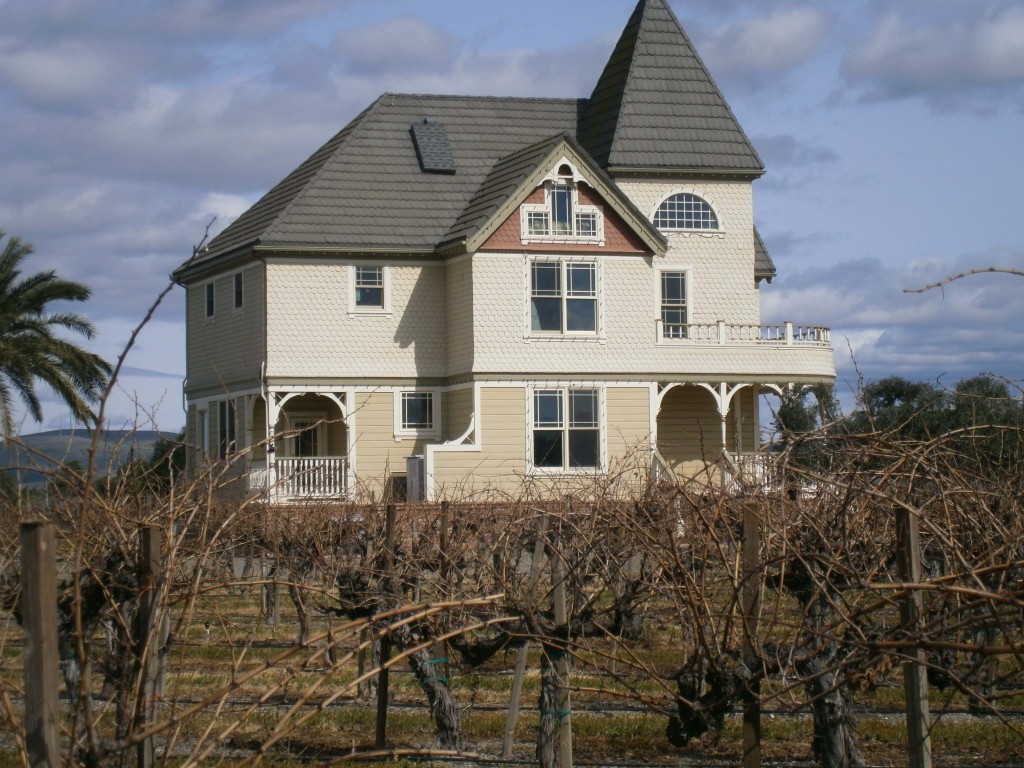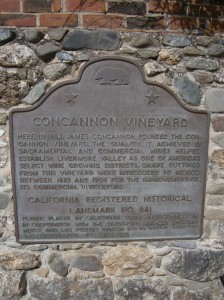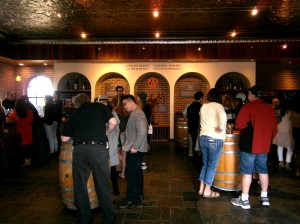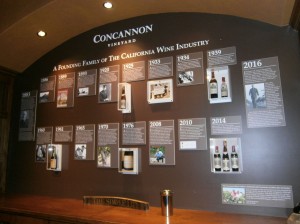4590 Tesla Rd, Livermore, CA 94550
Website: https://www.concannonvineyard.com/
My first stop in Livermore was to Concannon Estate. Driving up to the winery we had to enter through iron gates and drove past rows of vines with a picturesque view of hills in background. This winery is a historic icon having been founded in 1883. Today the winery is run by 4th generation John Concannon. He grew up in the original home that his great-grandfather built on the property in 1883. Concannon went through a ten year revitalization effort not to long ago to restore the estate which now includes a Tasting Room, a Wine Library, and a Wine Bar. The family made all efforts to use original materials when they restored the winery.
There is so much history to take in at Concannon. One of the most intriguing stories to me is the 1883 Concannon Margaux Mother Vine Vineyard. Founder James Concannon imported the original Cabernet Sauvignon vines from the famous Bordeaux, France first growth Chateau Margaux in 1883. To put things in perspective, the best Chateau Margaux wines sell for an average price of $600 today. In 1965, James took cuttings from the single vine to create Concannon Cabernet clones 7, 8, & 11. This is considered one of the most treasured Cabernet Sauvignon vineyards in California. The family has been partnering with UC Davis to preserve the vineyard. Today, approximately 80% of the 90,000 acres of Cabernet Sauvignon in California come from these clones. The mother vine is still producing fruit.
Upon entering the property, the historic family home stands out amongst the vines. Before going into the tasting room to try the wine, my husband and I meandered around the property. Outside there is a large open, grassy area for picnicking, as well as a covered pavilion and Grape Arbor. Guests are welcome to take a seat at the pavilion bar that is open seasonally. There is also some table seating for club members. As we walked around we came upon the wooden doors to the historic winery and a California historical landmark plaque. Concannon holds private events both indoors or outdoors. Visitors can also sign up for private tours and tastings.
In the front of the winery near the Tasting Room entrance is a fountain and shrubs in the shape of wine bottles. The entire tasting room building is made of brick and wood. A hostess greeted us near the door upon entering the tasting room. Inside is a wide open space with brick walls, and at one end of the room is the bar made from century old wood and barrels from the original tasting room. The lighting was dim. There were a few people at the bar and quite a few other small groups standing in the center of the room around oak barrels that served as small table tops. A staff member was walking around pouring wine for those not at the bar. It had the feel of a casual bar where people would hang out after work with some work buddies. The crowd wasn’t too crazy while we were there but it can get very busy. Reservations can be made ahead and are required for groups of 8 or more.
On the opposite side of the room from the bar was a little side room called the Story Gallery. There was a timeline of the winery’s history on the wall. Here are some more interesting facts that I learned. Captain Joe Concannon, 2nd generation, was first to create America’s varietal wine labels that we have today. That may not seem like a big deal today, but it was a complete deviation from how the Europeans labeled their wines based on region. Labeling by varietal was new and somewhat controversial back in 1925. A few of Concannon’s Prohibition-dated bottles are on display in the National Museum of American History in the Smithsonian in Washington, D.C. Also, Concannon was the first winery to produce a standalone varietal Petite Sirah in America in 1961.
This was really a nice way to be introduced to Livermore Valley. My husband and I left feeling impressed by both everything we learned about the winery and their wines. Our server Dimitry did a great job explaining the wines and giving us a bit of a history lesson despite the fact that the tasting room was pretty busy. We tried the 2014 Reserve Mother Vine Cabernet Sauvignon which was a very full bodied wine with rich dark fruit and toastiness. However, the wine that won me over more than the Mother Vine was the 2014 Captain Joe’s Petite Sirah. It had an inky color that is characteristic of Petite Sirah and flavors of mocha and red fruit. It was full bodied and firm but had a velvety finish. Our overall experience here was a great!




